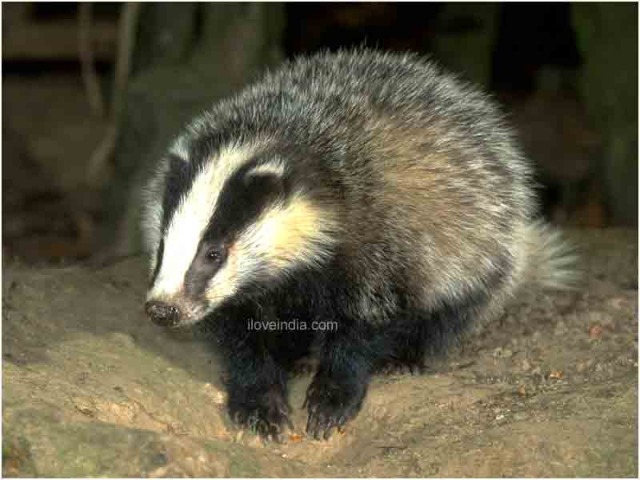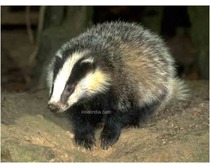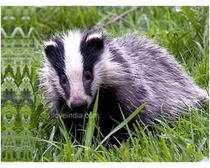Badgers are carnivorous mammals, found in different parts of the world. Explore some more interesting facts and amazing information on badger, as given in this article.
Facts About Badger
Badgers are the members of one of the largest carnivore family, Mustelidae. They are closely related to weasels, otters and stoats and reside in underground burrows called setts. They are short legged and heavy set and are renowned for their typical hunting nature of trapping their prey inside burrows and digging them out. There are a total of 3 subfamilies and 8 species of badgers, varying slightly in their food habits and living habitats. Taking about badgers, the lower jaw of these animals is articulated with the upper set in such a manner that its dislocation is quite impossible. This unique articulation helps them maintain a strong hold and at the same time, restricts their jaw movements to hinging open and shut or sliding from side to side, without the twisting movement possible for the jaws of most mammals. Although they are regarded as solitary animals, they are capable of protecting their young ones from much larger animals like wolves, coyotes and even bears. To get a better idea on badger, go through the interesting facts and amazing information given below.

Facts About Badger
Kingdom: Animalia
Phylum: Chordata
Class: Mammalia
Order: Carnivora
Family: Mustelidae
Subfamily: Melinae, Mellivorinae, Taxidiinae
Genera: Arctonyx, Melogale, Meles, Mellivora, Taxidea
Length: 750 mm (head to tail), 150 mm tail
Height: 300 mm high
Weight: 8 to 9 kg (during spring season)
11 to 12 kg (during autumn season)
Age: Approximately 2 years
Diet: Earthworms, grubs, insects, small amphibians, reptiles, mammals, birds, berries and seeds.
Gestation Period: 7 to 8 weeks
Number of Offspring: 1 to 5 offspring
Interesting And Amazing Information On Badger:
- Badgers are large nocturnal retiring creatures, which are normally shy and live in social or family groups.
- They are closely related to stoats, otters, weasels, polecats and pine martens.
- Badgers have a strong sense of smell and search for food by constantly sniffing the ground ahead of them, with the help of their snouts.
- These animals have typical underground homes called setts, which are complete with a labyrinth of tunnels.
- An adult badger can grow up to a maximum of 36” long and have a weight of around 22 to 27 lbs.
- They are omnivorous animals, depending on a wide variety of foods for their diet. However, their staple food consists of earthworms, with a per day consumption of around 200 worms.
- Badgers have powerful non-retractable claws that are very useful in digging and looking for food.
- Although these animals do not hibernate, they are less active in the winter season.
- Badgers have a typical mating process, which involves ‘delayed implantation’. Even though females are able to mate any time of the year, after the cubs are born, the fertilized egg does not implant in the uterus until the month of December.
- The cubs are normally born in the month of February and are usually 1 to 3 in number. These cubs emerge around the month of May, after spending the first 8 to 10 weeks of their life underground.
- Badgers have excellent hearing and smelling sense, which proves very useful in searching for their food. However, they have very poor eyesight.
- An interesting way by which badgers capture their prey is by chasing them into burrows and then digging them out.
- The Indonesian and Palawan Stink Badgers are renowned for their popular defense mechanism, of squirting a vile smelling liquid from their anal glands, to deter their enemies.
- The habitat of badgers is negatively affected by human agriculture and development.


See also
More from iloveindia.com
- Home Remedies | Ayurveda | Vastu | Yoga | Feng Shui | Tattoos | Fitness | Garden | Nutrition | Parenting | Bikes | Cars | Baby Care | Indian Weddings | Festivals | Party ideas | Horoscope 2015 | Pets | Finance | Figures of Speech | Hotels in India : Delhi | Hyderabad | Chennai | Mumbai | Kolkata | Bangalore | Ahmedabad | Jaipur
- Contact Us Careers Disclaimer Privacy Policy Advertise With Us Lifestyle Sitemap Copyright iloveindia.com. All Rights Reserved.




